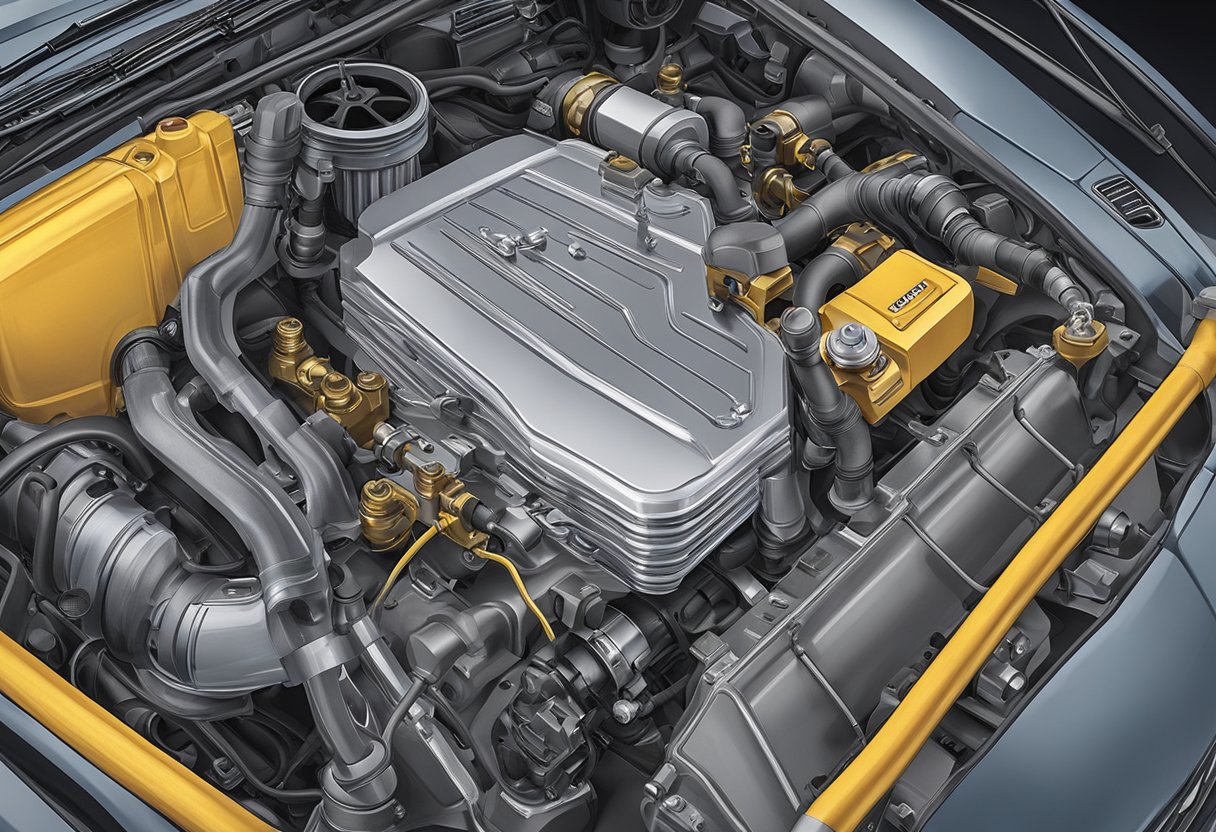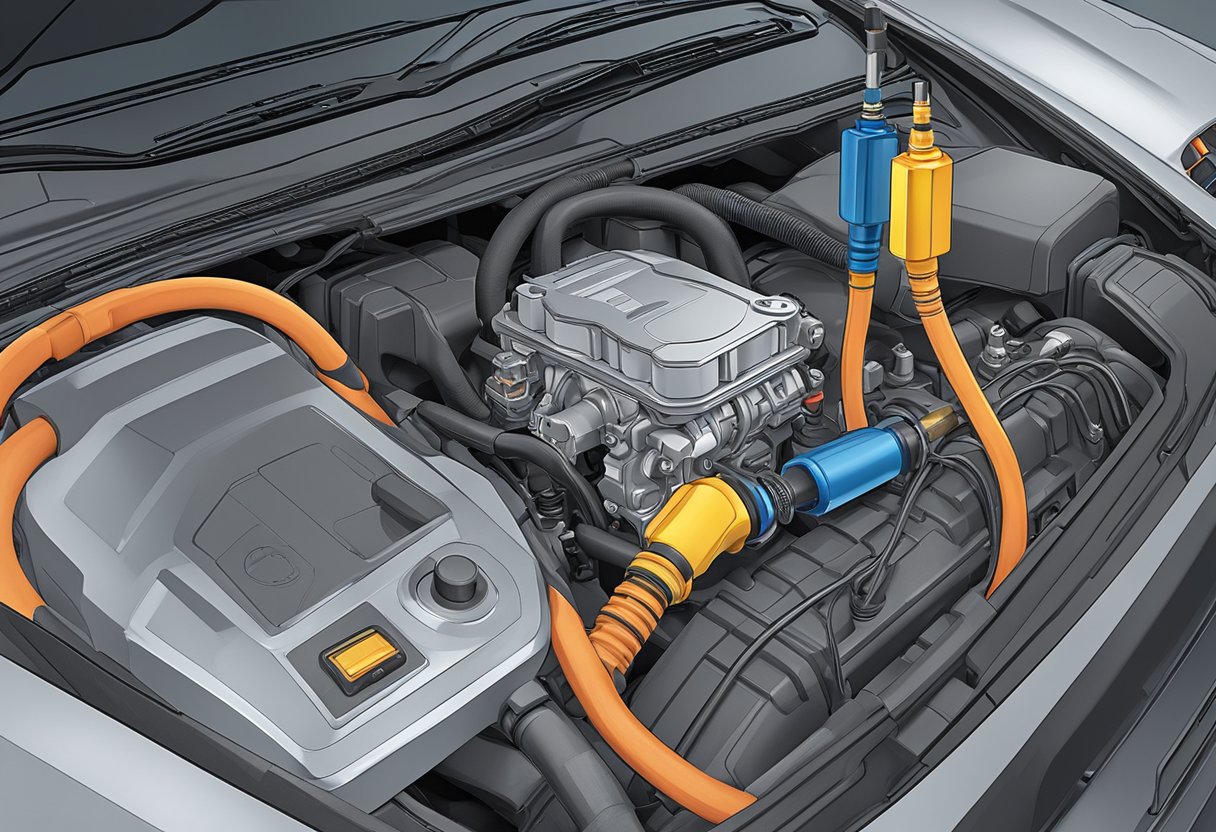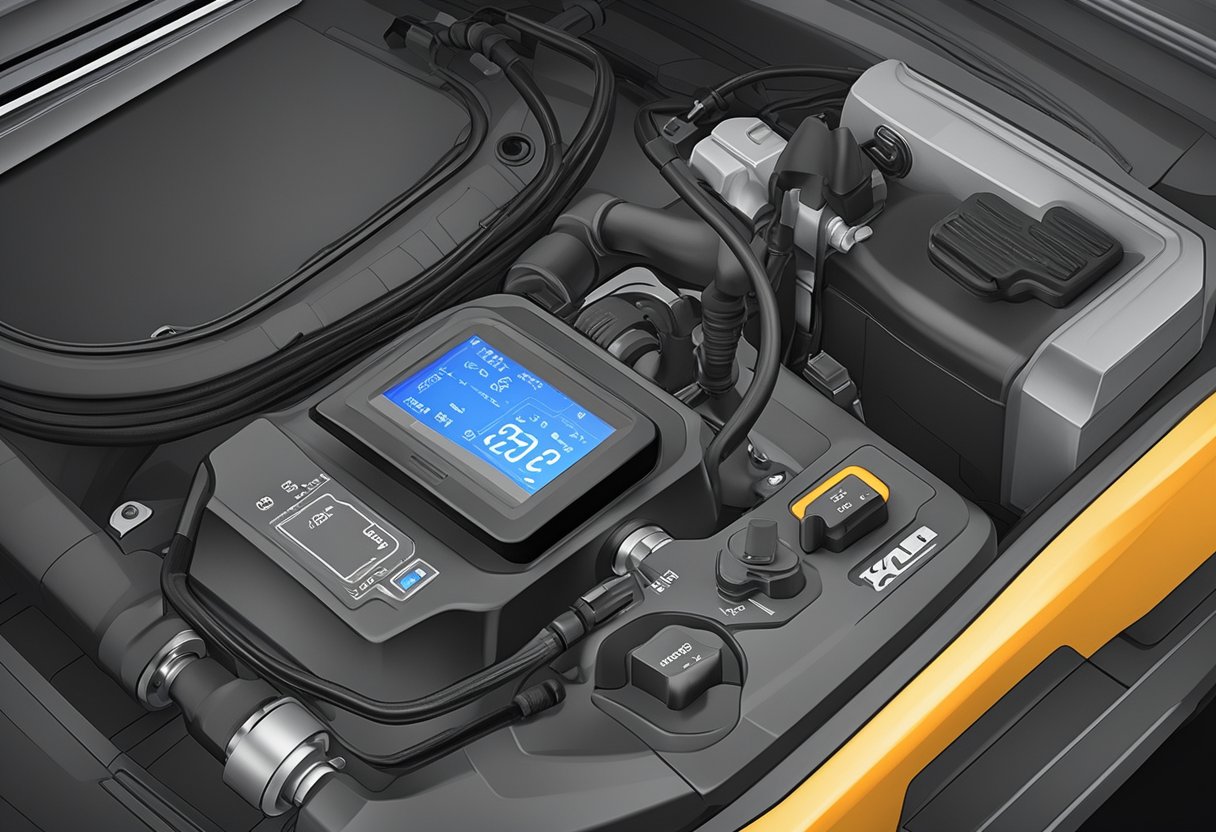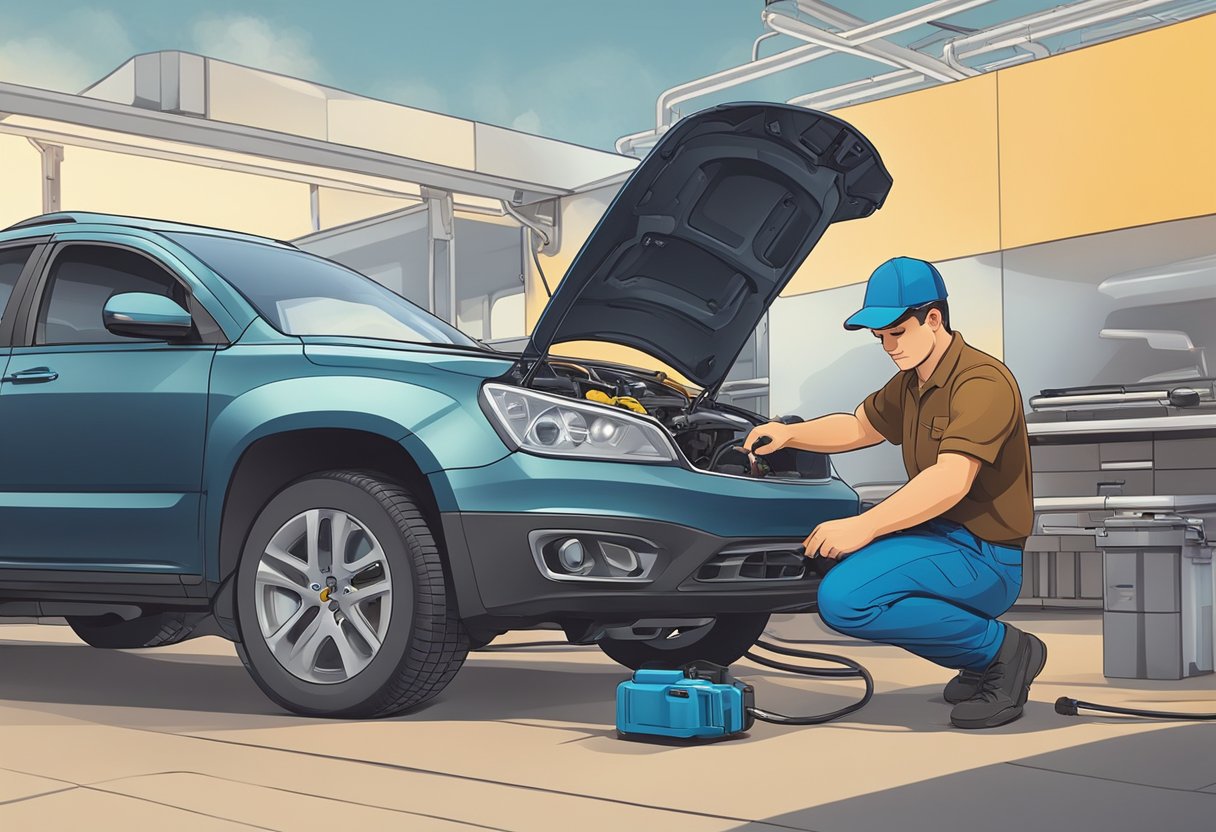If you’ve been driving your car and suddenly the check engine light comes on, you may be wondering what’s wrong.
One possible culprit is the P0191 code, which refers to a problem with the fuel rail pressure sensor.
This sensor is responsible for monitoring the fuel pressure in the fuel rail and sending information to the engine control module (ECM). When the ECM receives a signal that is outside of the normal range, it triggers the P0191 code.
The P0191 code can be caused by a variety of factors, including a faulty fuel pressure sensor, a bad fuel pressure regulator, or an issue with the fuel rail pressure sensor circuit.
If you ignore this code, it could lead to serious engine damage and costly repairs. That’s why it’s important to understand what the P0191 code means and how to fix it.
In this article, we’ll explain everything you need to know about the P0191 code and the fuel rail pressure sensor.
Understanding P0191 Code
Definition and Significance
If you’re reading this article, it’s likely that you’ve come across the P0191 Diagnostic Trouble Code (DTC).
This code is related to the fuel rail pressure sensor and can be triggered when the fuel rail pressure signal voltage of sensor “A” is operating outside its normal range.
It can either mean that it is lower or higher than normal.
The P0191 code is significant because it can cause a variety of issues with your vehicle’s performance. If left unaddressed, it can cause your vehicle’s engine to stall, misfire, or fail to start altogether.
Also, the code can cause your vehicle’s fuel efficiency to drop, leading to increased fuel costs.
Fuel Rail Pressure Sensor Role
The fuel rail pressure sensor is a critical component of your vehicle’s engine management system.
It is responsible for monitoring the fuel pressure in the fuel rail and sending a signal to the Engine Control Module (ECM) or Powertrain Control Module (PCM).
This signal is used to regulate the amount of fuel that is released into the combustion chambers by controlling the fuel injectors.
The fuel rail pressure sensor is typically located near the fuel rail center and can be identified by its electrical connector.
It is important to note that the fuel rail pressure sensor can fail due to a variety of reasons, including wear and tear, exposure to extreme temperatures, and exposure to harsh chemicals.
In summary, the P0191 code is a sign that there is an issue with your vehicle’s fuel rail pressure sensor.
If you are experiencing any issues with your vehicle’s performance, it is important to have the code diagnosed and repaired as soon as possible to avoid further damage.
Common Symptoms of Code P0191
If your vehicle’s check engine light is on, you may have a P0191 code. This code relates to the fuel rail pressure sensor and can indicate a range of issues with this component.
Here are some common symptoms you may experience if your vehicle has a P0191 code:
Engine Performance Issues
One of the most common symptoms of a P0191 code is engine performance issues. You may notice that your vehicle is not running as smoothly as it should. It may be difficult to accelerate or maintain a consistent speed.
This is because the fuel rail pressure sensor is not sending the correct signals to the engine control module (ECM), which can result in poor engine performance.
Warning Indicators
Another symptom of a P0191 code is the appearance of warning indicators on your dashboard. The check engine light will illuminate, indicating that there is a problem with your vehicle.
This is because the ECM has detected a problem with the fuel rail pressure sensor. If you see this warning indicator, it is important to have your vehicle inspected by a qualified mechanic.
In addition to these symptoms, you may also experience stalling, drivability issues, hesitation, or engine stall. If you notice any of these symptoms, it is important to have your vehicle inspected as soon as possible.
A qualified mechanic can diagnose the problem and recommend the appropriate repairs.
What Are the Common Symptoms of Fuel Rail Pressure Sensor Issues Related to the P0191 Code?
When diagnosing fuel rail pressure sensor issues related to the P0191 code, it’s important to watch out for common symptoms such as engine hesitation, difficulty starting, and decreased fuel efficiency. These issues can indicate a faulty fuel rail pressure sensor, requiring immediate attention for proper vehicle function.
Potential Causes of P0191
If your vehicle’s check engine light is on and you have retrieved a P0191 code, it means that there is an issue with the fuel rail pressure sensor circuit.
There are several potential causes of this issue, including sensor and circuit issues, as well as issues with various fuel system components.
Sensor and Circuit Issues
The fuel rail pressure sensor is responsible for monitoring the pressure levels in the fuel rail. If the sensor fails or there are issues with the circuitry that connects it to the vehicle’s computer, you may experience a P0191 code.
Faulty fuel pressure sensors can be caused by a variety of issues, including wiring problems, connector issues, and corrosion.
Fuel System Components
In addition to sensor and circuit issues, there are several fuel system components that can cause a P0191 code.
The fuel pump, fuel pressure regulator, vacuum leaks, and fuel filter can all contribute to issues with fuel pressure and trigger a P0191 code.
If you are experiencing a P0191 code, it is important to diagnose and address the issue as soon as possible. Failing to do so can lead to further damage to your vehicle and potentially costly repairs.
Diagnostic Process
When you encounter the P0191 code, there are two types of diagnostic processes you can follow: preliminary checks and advanced diagnostics.
Preliminary Checks
Before you start with the advanced diagnostic process, make sure to perform the following preliminary checks:
- Check the fuel pressure with a fuel pressure tester. If the pressure is low, it could be an issue with the fuel pump or fuel filter.
- Check the fuel pressure sensor connector and wiring for any damage or loose connections.
- Inspect the fuel rail pressure sensor for any physical damage or leaks.
Advanced Diagnostics
If the preliminary checks do not solve the issue, you can proceed with the advanced diagnostic process. Follow the steps below:
- Connect an OBD-II scanner to the vehicle’s ECM/PCM and retrieve the freeze frame and live data.
- Check the fuel rail pressure sensor’s voltage reading using an oscilloscope. The reading should be within the manufacturer’s specifications.
- If the voltage reading is outside the specifications, replace the fuel rail pressure sensor.
- If the voltage reading is within the specifications, perform a fuel pressure test to check if the fuel pressure is within the manufacturer’s specifications.
- If the fuel pressure is within the specifications, check the fuel pump and fuel filter for any issues.
- If the fuel pump and fuel filter are working correctly, inspect the fuel injectors for any damage or leaks.
By following the above diagnostic process, you can accurately diagnose and fix the P0191 code. Remember to always refer to the manufacturer’s specifications and use the appropriate tools when performing diagnostics.
Repair and Maintenance
Addressing the P0191 Code
If you are experiencing the P0191 code, it is essential to address it promptly to prevent further damage to your vehicle. The code indicates that the fuel rail pressure sensor circuit is not operating within its normal range.
It can result from a faulty sensor, damaged wiring, or a malfunctioning fuel injector. The first step in addressing the P0191 code is to diagnose the root cause of the issue.
To diagnose the issue, you will need to use an OBD-II scanner to read the code and determine the cause of the problem. Once you have identified the root cause, you can take steps to fix the issue.
If the problem is a faulty sensor, you will need to replace the fuel rail pressure sensor. If the issue is with the wiring, you will need to repair or replace the damaged wires.
If the problem is a malfunctioning fuel injector, you will need to replace the injector.
The cost of repairing the P0191 code can vary depending on the root cause of the issue. The cost of a fuel rail pressure sensor can range from $50 to $200, while the cost of a fuel injector can range from $100 to $500.
Labor costs can also vary depending on the complexity of the repair. It is essential to have a qualified mechanic diagnose and repair the issue to ensure that it is done correctly.
Preventative Measures
Preventative measures can help reduce the risk of experiencing the P0191 code. Regular maintenance of your fuel delivery system can help prevent issues with the fuel rail pressure sensor circuit.
It is essential to replace your fuel filter regularly to ensure that your fuel delivery system is working correctly.
A clogged fuel filter can cause issues with the fuel pressure, which can lead to problems with the fuel rail pressure sensor circuit.
Regular maintenance of your fuel injectors can also help prevent issues with the fuel rail pressure sensor circuit.
Dirty or clogged fuel injectors can cause issues with fuel delivery, which can lead to problems with the fuel rail pressure sensor circuit.
It is essential to have your fuel injectors cleaned or replaced as needed to ensure that they are functioning correctly.
Maintaining your vehicle’s fuel efficiency can also help prevent issues with the fuel rail pressure sensor circuit.
Poor fuel efficiency can be a sign of issues with the fuel delivery system, which can lead to problems with the fuel rail pressure sensor circuit.
It is essential to monitor your vehicle’s fuel efficiency and address any issues promptly to prevent further damage to your vehicle.
In summary, the P0191 code indicates that there is an issue with the fuel rail pressure sensor circuit. To address the issue, you will need to diagnose the root cause of the problem and take steps to fix it.
Preventative measures such as regular maintenance of your fuel delivery system, fuel injectors, and monitoring your vehicle’s fuel efficiency can help reduce the risk of experiencing the P0191 code.
As an Amazon Associate we earn from qualifying purchases.














